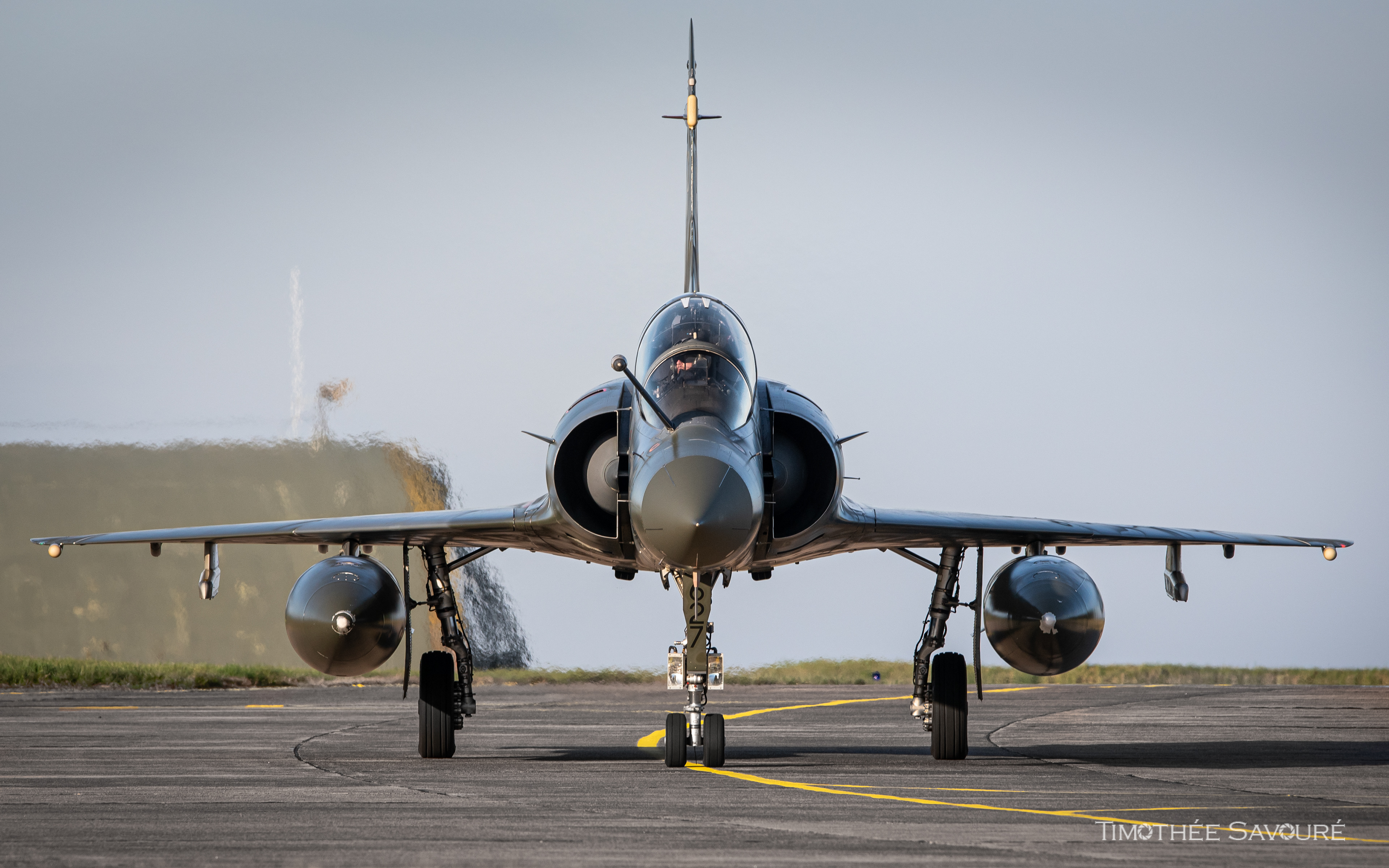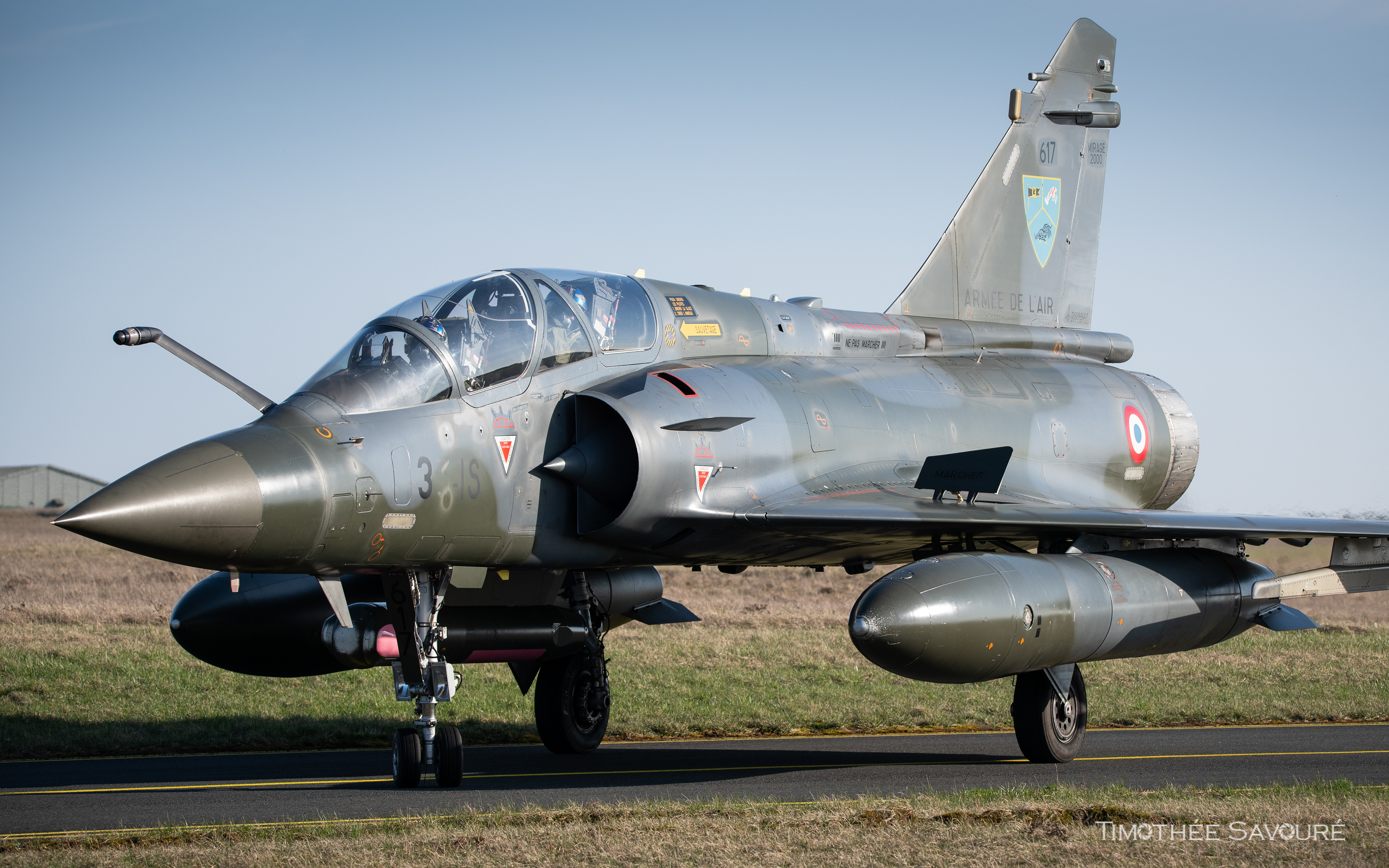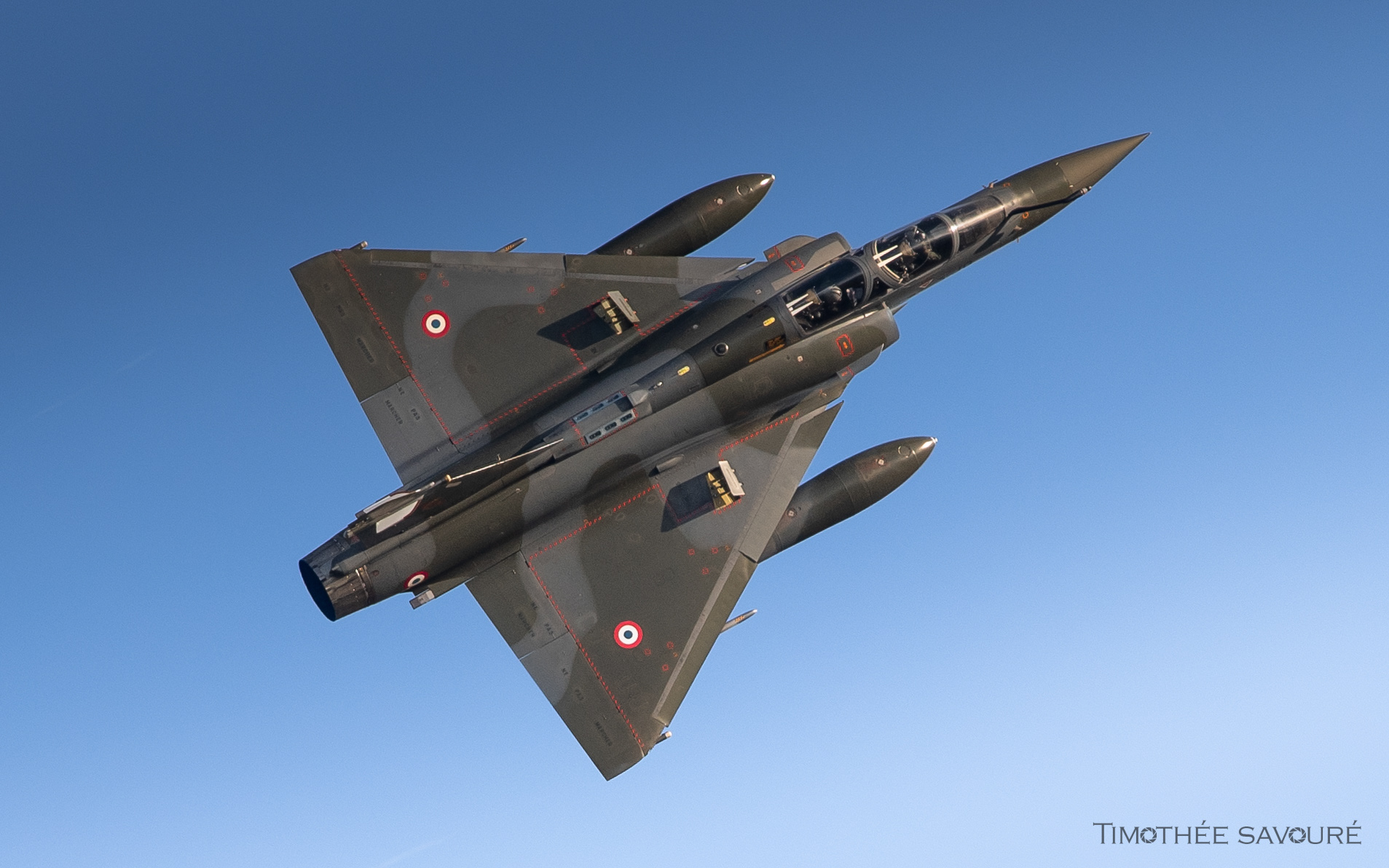During a recent visit to Air Base 133 (BA133) in Nancy-Ochey, Jet Blast Area had the unique opportunity to explore the history and operations of the 3rd Fighter Wing (3ème Escadre de Chasse). This visit provided interesting insights into the role this prestigious (yet not the most famous) unit plays within the French Air and Space Force. This article aims to share the experiences gathered during this visit, through a presentation of the Wing, the different squadrons and the air base that hosts them.
History of the 3ème Escadre de Chasse
The 3rd Fighter Wing dates back to World War II when it was formed on January 1, 1944, as part of the Free French Air Forces under Commandant Monraisse. The unit was composed of the Groupes de Chasse (GC, Fighter Groups) I/4 Navarre, GC I/5 Champagne, and GC III/6 Roussillon. At that time, the unit flew the Bell P-39 Airacobra. It was soon re-equipped with P-47 Thunderbolts when the GC III/3 Ardennes fighter squadron joined the wing later that same year. Following the landings in Provence, the wing arrived at Salon-de-Provence on September 30, 1944. Soon after, it moved to Vallon, located a few kilometers away. The Wing reached Dole toward the end of December 1944, and then moved to Bordeaux on April 12, 1945, to participate in the Battle of the Royan Pocket. It then moved back east on April 23, 1945, to garrison at Strasbourg-Entzheim Airport near Strasbourg. The Wing conducted its last wartime missions on May 1, 1945, but poor weather conditions prevented the P-47s from taking off again until the cease-fire was signed on May 8, 1945.
After a few months in Alsace and then in Germany, the 3rd Fighter Wing moved again to Air Base 136 in Friedrichshafen at the end of May 1947. The squadrons logically changed their designations at that time, becoming GC 1/3 Navarre and GC 2/3 Champagne, and the pilots transitioned to the Spitfire Mk. IX. In 1948, the Wing was deployed to take part in the Indochina War, staying there for two years before returning to France. Meanwhile, the pilots trained at Mont-de-Marsan on the Wing’s first jet aircraft: the Vampire. Then, in 1951, the F-84 was introduced, and the Escadron de Chasse 3/3 Ardennes was activated two years later. During the same decade, the 3rd Fighter Wing played a key role abroad, particularly during the Suez Crisis in 1956 and the Algerian War until 1958.
The 3rd Fighter Wing played a role in NATO when it was based in Reims from 1959 to 1961, and later in Germany at the Lahr Air Base, operating the F-100 Super Sabre fighter aircraft. From 1965, the squadrons began transitioning to the Mirage IIIE, changing their mission to focus on air defense and tactical assault.
In 1967, the 3rd Wing left Germany and relocated to its new air base in Nancy, where it has remained since. At the same time, it abandoned its tactical support mission to assume the role of low-altitude coverage for strategic air force bases. The 3rd Wing entered a new era on July 31, 1991, when the 2/3 Champagne squadron began transitioning to the Mirage 2000N. The 3/3 squadron conducted the final French Air Force flight on the Mirage IIIE on March 12, 1993. The three squadrons of the 3rd Fighter Wing then transitioned to their current aircraft, the Mirage 2000D.
The Fighter Wing was dissolved in 1995, although the squadrons remained active. It was reformed in 2014 when the French Air Force re-established the "Fighter Wing" level.

Mirage 2000D n°614 back from a mission

Special livery to celebrate the 80 years of the names of the squadrons of 3rd Fighter Wing

Mirage 2000D n°627 taxiing in front of a guarding Jaguar
3ème Escadre de Chasse in 2024
The 3rd Fighter Wing hosts around 800 airmen and women across three squadrons, as well as the support squadron ESTA "Malzéville" and the simulator center. Lieutenant-Colonel 'Julien,' commander of the 3rd Fighter Wing, granted us an interview to introduce the Wing, its missions, and its challenges, and to answer our questions before we visited the squadrons.
Thanks to a rapid deployment policy, the 3rd Fighter Wing can quickly intervene from Nancy or a forward operating base (FOB). The Wing’s primary missions, operating the Mirage 2000D RMV, are air-to-ground attack and close air support (CAS). Air-to-ground missions consist of deep strikes by day or night, in all weather conditions, using cruise missiles or GPS- and laser-guided bombs. For this purpose, the Mirage 2000D RMV has recently been qualified to carry the GBU-50 (a 1-ton bomb) on its center hardpoint. CAS missions follow standard NATO procedures and impose strict constraints, including the presence of multiple combatants, high pressure, and the need to avoid collateral damage. Thanks to the dual-seat configuration of the Mirage, airmen can divide mission tasks. For instance, during air refueling, the pilot communicates with the tanker while the NOSA (Navigateur Officier Système d'Armes, or Weapons System Officer - WSO) manages the next phase of the mission on a different frequency.
Until the summer of 2023, the 3rd Fighter Wing had two deployed detachments in Africa: one in Niamey (Niger) and another in N'Djamena (Chad). Eight aircraft, 15 crews, and 120 personnel were stationed there, with reinforcements deployed during the Niger crisis to maintain a deterrent posture. Currently, only five Mirage 2000s remain stationed in N'Djamena, along with six crews and 70 personnel. Diplomatic relations with France's allies are crucial, and the Air Force plays a significant role in strengthening these ties. The 3rd Fighter Wing regularly participates in European Air Policing missions in Eastern Europe, contributing to air shielding efforts. These detachments in Romania and Lithuania help defend NATO airspace while also giving French pilots and crews valuable experience with allied air bases.
The Wing relies on a highly capable platform to carry out its missions: the Mirage 2000D. Introduced in 1995 and set to retire around 2035, the aircraft has recently been upgraded to the RMV standard (Rénovation Mi-Vie, or Mid-Life Renovation). The first RMV upgrade was completed in 2021, with the goal of having 48 aircraft upgraded by 2025, representing two-thirds of the fleet. The RMV standard improves the man-machine interface and includes digitization through data fusion into a single screen. This allows the Air Force to update the system regularly (similar to updates on iOS or Android), adapting to evolving needs by creating appropriate systems. After the first aircraft was upgraded, 1.5 years were required to collect live data and implement necessary improvements. The first war mission for an RMV-equipped aircraft occurred in spring 2023, with the first live weapon firing in the summer of the same year. The year 2024 marks a critical period of testing for the RMV standard, with the goal of official validation in 2025. The RMV standard is also undergoing trials with the ECE 1/30 'Côte d'Argent'. They could be seen during NATO Tiger Meet 2023, from which you can find my report here.

Mirage 2000D n°627 back from a mission

Mirage 2000D n°636 in maintenance

Mirage 2000D n°614 back from a mission

Mirage 2000D n°614 taking-off

Mechanic working on a Mirage 2000D

Mirage 2000D n°617 showing off in front of us

Mirage 2000D n°666 taking-off for a mission

Mirage 2000D n°627 after a mission

Tactical break arrival for those 4 Mirage 2000D
Escadron de Chasse 2/3 'Champagne'
One of the three squadrons based in Nancy is the 2/3 "Champagne." For Jet Blast Area, I had the opportunity to visit the squadron’s headquarters, maintenance facility, and observe a few aircraft movements. Major Bach, the squadron commander, shared some insights into the challenges they face.
The Champagne squadron is unique because it is the only one in France performing all mission types: from a pilot's first fighter jet flight to patrol leader qualification and overseas deployments. It is also the only squadron still responsible for training Mirage 2000 pilots, since the Escadron de Chasse 2/5 "Île-de-France" was deactivated in 2022 (see my report on the 2/5 squadron here). The seven Mirage 2000B dual-seat training aircraft were relocated from Orange to Nancy and now belong to the 2/3 squadron. Using these aircraft, pilots can train for various mission scenarios after their first flight, such as night flying, air-to-air refueling, and using night vision goggles. Depending on the mission, the aircraft can be equipped with different systems. The instructors also have distinct qualifications for the Mirage 2000B and 2000D. Currently, only four instructors hold both qualifications, but other pilots are being trained to become B&D instructors. Weapons Systems Officers (WSO) only train on the Mirage 2000D, as their flight capabilities are not as extensive as those of pilots.
The 2/3 squadron also hosts a Mirage 2000D RMV simulator, equipped with 280° vision and three networked secondary stations for training in four-ship missions. This setup allows for a wide variety of scenarios to be simulated. It is also possible to link Nancy's simulator with others on French Air Force bases, such as Saint-Dizier and Mont-de-Marsan, enabling future Mirage pilots to train alongside Rafale pilots. The system can simulate various failures, provide real-time mission data, and train for the tactical aspects of missions. Unfortunately, we were unable to see the simulator during our visit.

Mirage 2000B n°530 in maintenance + nose radomes

Mirage 2000D n°685 in maintenance

Mirage 2000D n°685 in maintenance

Mirage 2000B n°525 leaving for a training mission

Mirage 2000B n°529 leaving for a training mission

Mirage 2000B n°528 leaving for a training mission

Mirage 2000D n°627 breaking before landing

New pilot leaving for a training flight

2/3 Champagne instructor and student pilot leaving for a training flight

Mirage 2000B n°525 & 528 returning from a mission

Mirage 2000D n°614 back from a mission

Mirage 2000D n°614 back from a mission

Mirage 2000D n°627 back from a mission

Mirage 2000D n°671 returning from a mission

Mirage 2000D n°686 taxiing to the apron after a mission
I would like to thank the SIRPA Air, the BA133 PAO, CNE Beck, for making this report possible. Thanks to Major Bach and LTC Julien for their time and availability.










